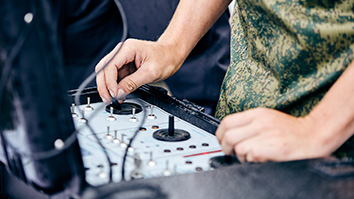Citation
Schwartz, D. E.; Street, R. A.; Krusor, B. S.; Mei, P.; Pierre, A.; Karajic, A.; Stambaugh, M.; Mercier, P.; Wang, J. Flexible Electronics and Oral Biosensing. 255th ACS National Meeting, New Orleans, LA.; New Orleans, LA USA. Date of Talk: 2018-03-18
Abstract
Flexible-hybrid electronics (FHE) combined with printed sensors enables low-cost, customizable, sensor systems for new form factors and applications. The FHE platform is compatible with large-volume sheet-fed or roll-to-roll manufacturing processes. It combines high-performance silicon electronics with peel-and-stick sensor labels for safety, health, environmental monitoring, and other applications. Printable sensors include physical sensors, such as for temperature and pressure, chemical sensors for gases and other analytes, and electrochemical and biochemical sensors. Printing allows for plug-and-play incorporation of sensors onto flexible electronics platforms. This talk will discuss PARCs work developing FHE fabrication processes, printed sensors, and demonstration systems. The focus will be on a mouth-guard-based FHE biosensor platform to enable continuous remote monitoring of bioanalyte concentrations in saliva. Saliva is favorable for biosensing because of its accessibility and the strong correlation with blood concentrations of important analytes. Chronoamperometry based on enzymatic oxidation of target species has been demonstrated to have high sensitivity and capability for quantification of analyte concentrations. The electrochemical sensor system is fabricated on a small, flexible plastic foil for mounting on a mouth guard, and enable continuous sensing of lactate, glucose, or other analytes. To fabricate the system, PARC has developed a semi-automated FHE process for placing and connecting discrete electronic components on printed interconnect. Sensor electrodes can be customized for various analytes through changing the enzyme layer and are replaceable. Saliva is a complex fluid and prone to biofouling. This is addressed with the development of protective coatings to enable continuous operation for at least eight hours. The electronics are protected from the saliva protected by an encapsulant, and the batteries are wirelessly rechargeable. Remote readout is through Bluetooth Low Energy (BLE) communication.


